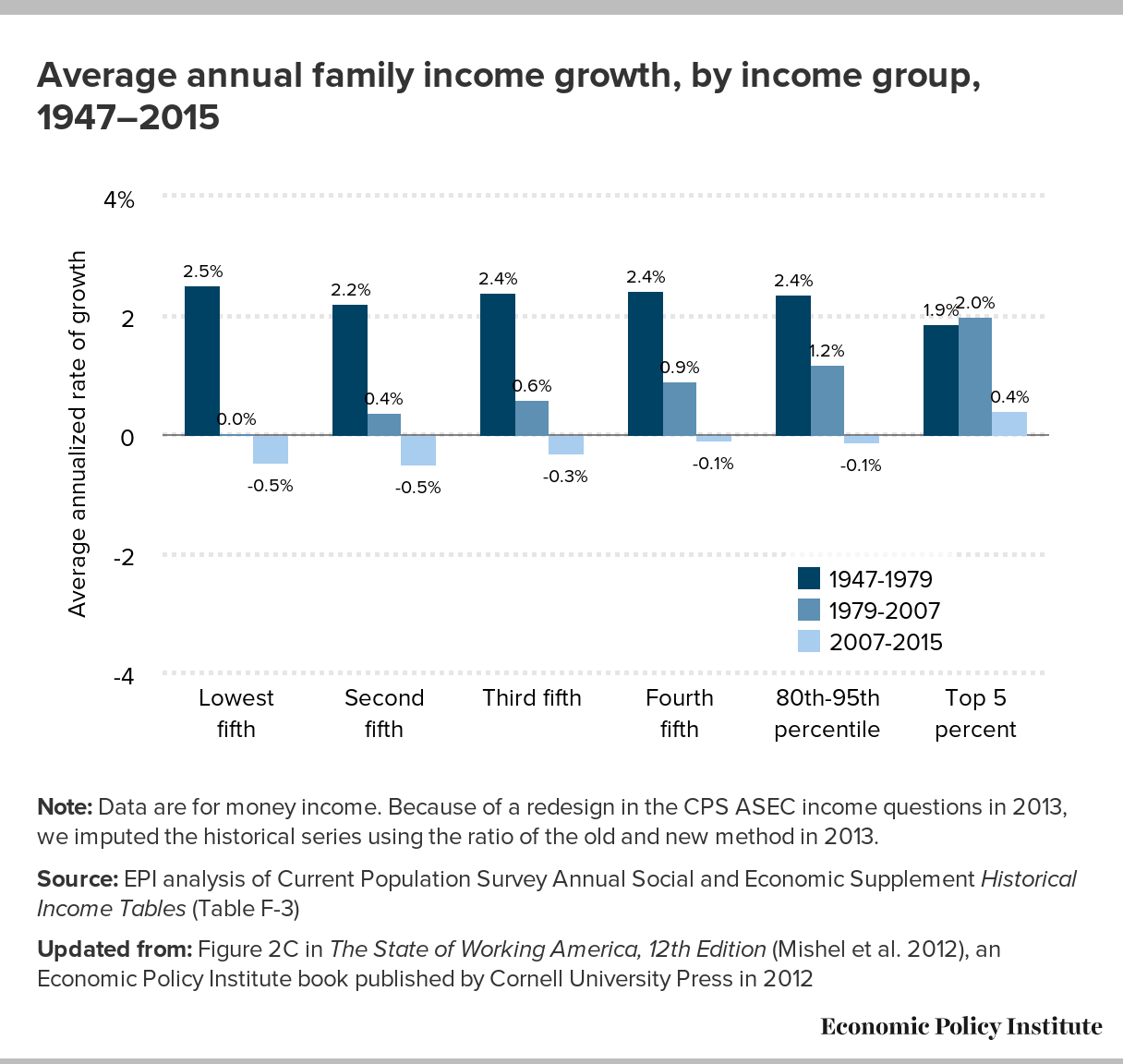

Share
In recent decades, the vast majority of Americans have experienced disappointing growth in their living standards—despite economic growth that could have easily generated faster gains in their living standards had it been broadly shared.
Tuesday’s excellent news on family income growth over the past year doesn’t make up for this long legacy of rising inequality. It is certainly a good start. But, we’ll need a run of years like this to restore the income losses suffered during the Great Recession for most American families, let alone make up for a generation of income growth that lagged far behind the economy’s potential.
As with most economic analysis, assessing the growth of living standards for the vast majority requires specifying benchmarks against which to measure actual performance. I offer up two reasonable benchmarks.
The first is how income growth differs for families at different parts of the income distribution. What we have seen since the last business cycle peak in 2007, before the Great Recession hit, is growing income inequality. The news about income growth in 2015 is a welcome break from this trend, but does not yet overturn the general pattern that we have seen since 2007.
The second benchmark I posit is income growth relative to that of earlier historical epochs. What this benchmark shows is that in the three decades following World War II, income growth was both much faster as well as more broadly shared than it has been since 1979.
The chart above illustrates these points in greater detail. What we see in the dark blue is an early period of far more equal growth. In those three decades following World War II, income growth was relatively strong and uniform across the income distribution.
From 1979 to 2007, however, the slower income growth that prevailed was concentrated in the top 20 percent of the income distribution, with most of it going to the top 5 percent. The stair-step pattern shows that each consecutive income group saw an increasing amount of growth.
Since the last business cycle peak in 2007, the Great Recession has devastated incomes for the vast majority. Again, here we see a stair-step pattern—this time nearly all below zero. The largest income losses occurred at the bottom, with only the very top of the income distribution experiencing any gains between 2007 and 2015.
And yet, Tuesday’s news about rapid and widespread income growth in 2015 offers hope for coming years. Economic recovery finally started arriving for tens of millions of American families over the past year—we should make sure the economy is nurtured going forward, and not subverted by bad policy decisions.
This analysis is reprinted from EPI’s Working Economics blog.

